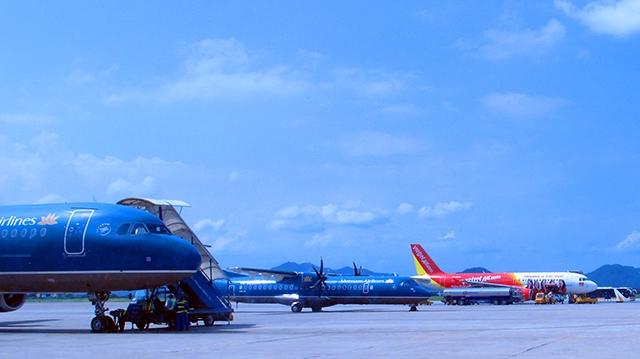The international market share of Vietnam’s domestic airlines in the first four months of the year fell to 43 per cent from 48.1 per cent in the first quarter of last year, according to a report from the Civil Aviation Authority of Vietnam (CAAV).

Head of CAAV Lai Xuan Thanh said that the figures do not mean that local airlines have not grown. The decline in international market share is in fact due to an increase in flights by international airlines to Vietnam, which proves the attractiveness of the country.
He added that he expects the figure will fall further, to 40 per cent, as more international airlines come to Vietnam. Most carriers consider Singapore, Thailand, and Hong Kong to be key markets regionally, and turning Vietnam into a popular destination is a strategy adopted by Vietnamese airlines.
The figures also show that airlines have taken the opportunities afforded by ASEAN open skies agreements. These agreements, including multilateral agreements on the liberalization of passenger and freight services, are important factors in establishing the ASEAN Single Aviation Market (ASAM).
Deputy Director of CAAV Vo Huy Cuong was quoted as saying that ASAM will help to make policies among countries become consistent. Flight routes, flight frequency, and the type of aircraft used are all decided upon by airlines, based on market demand, he said.
According to Mr. Pham Thanh Tung, Director General of the International Cooperation Department at the Ministry of Transport, ASAM presents the chance for connecting international flights in regional countries, but infrastructure development must adapt to the dramatic increase in passengers and cargo. It also creates fiercer competition, he said.
Mr. Cuong believes that Vietnamese airlines have the experience to compete in international markets.
Preparations made
Three out of the four airlines in Vietnam have announced plans for development. Vietnam Airlines has improved its services from three-star standard to four-star and will use 33 wide-body aircraft, consisting of 19 Boeing 787 Dreamliners and 14 Airbus A350-900XWBs. They have been and are being delivered to the carrier in the 2015-2019 period.
Vietnam Airlines also differentiates itself by providing free wi-fi on its new aircraft.
VietJet Air, meanwhile, has prepared well to compete with regional airlines. Its focus has been on three main areas: human resources, aircraft quality, and operational and management capacity. Regarding human resources, it has invested in training centers to meet demand.
Regarding aircraft, in 2014 it signed a contract to purchase 100 Airbus aircraft and last May also put pen to paper with Boeing to purchase 100 737 MAX 200 aircraft, costing $11.3 billion; the biggest agreement signed in the history of trade relations between Vietnam and the US.
VietJet Air also contributed 49 per cent of capital in the Thai airline Kan Air in 2013, establishing the joint venture ThaiJet Air.
Jetstar Pacific will also renew and expand its fleet with Airbus A320/A321s, rejuvenate its flight crews, and open more international flights in the region.
Vietnam Air Services Co (VASCO), the remaining domestic carrier, has not revealed any plans to bolster its market share.
Vietnam Airlines now flies to throughout Asia, Europe, and the Americas, and to Australia. VietJet Air conducts flights throughout Asia, while Jetstar Pacific flies to Asian destinations and also New Zealand. VASCO only flies domestically.
Vietnam’s carriers opened many new international air routes last year. Vietnam Airlines cooperated with Jet Airways to open routes to India and other flights, such as Singapore - Mumbai/Delhi/Chennai, Bangkok/Hong Kong - Mumbai/Delhi, and Ho Chi Minh City - Delhi.
VietJet Air opened flights to Vladivostok in Russia, while Jetstar Pacific opened flights from Hanoi to Thailand, Hong Kong, and other regional destinations.
VN Economic Times